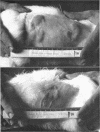Abstract
Schwab, John H. (University of North Carolina, Chapel Hill). Biological properties of streptococcal cell-wall particles. I. Determinants of the chronic nodular lesion of connective tissue. J. Bacteriol. 90:1405–1411. 1965.—The capacity of cell-wall fragments to induce a chronic remittent nodular lesion after a single injection into rabbit skin varies qualitatively as well as quantitatively among the streptococci. This variation among strains is the result of a summation of several properties of the bacterial cell, some intrinsic and others extrinsic to the cell-wall structure. With some species, the inability to produce this lesion may be related to the susceptibility of cell walls to lysozyme. Other factors defined in this paper include production of hyaluronidase, and association of the cell walls with a component which can affect the interval between injection and appearance of the nodules, called the latent time. Separation of cell-wall fragments from more soluble cell material by centrifugation results in a shorter latent time. Addition of the soluble supernatant fraction back to the cell walls prolongs the latent time and increases the area of lesion involvement. This latter effect is due to a spreading factor present in most cell extracts. Addition of hyaluronidase to isolated cell-wall fragments duplicates the increased lesion area but tends to shorten further the latent time. Thus, the soluble cell extract contains both a spreading factor and a component which prolongs the latent time, and the final influence on the lesion is in part a product of these two activities. The ease and extent of mechanical disintegration of the cell wall can also vary widely among strains and yield cell extracts differing in their content of cell-wall fragments of optimal size.
Full text
PDF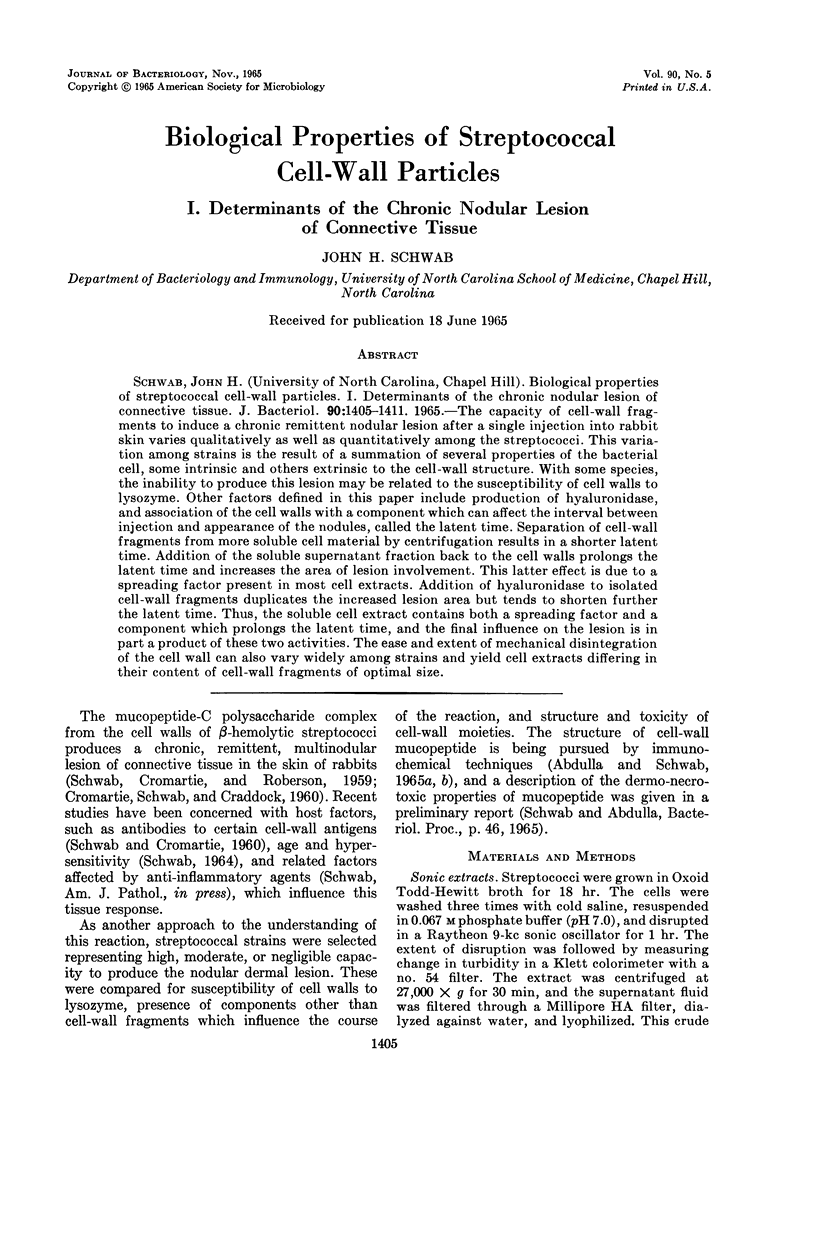
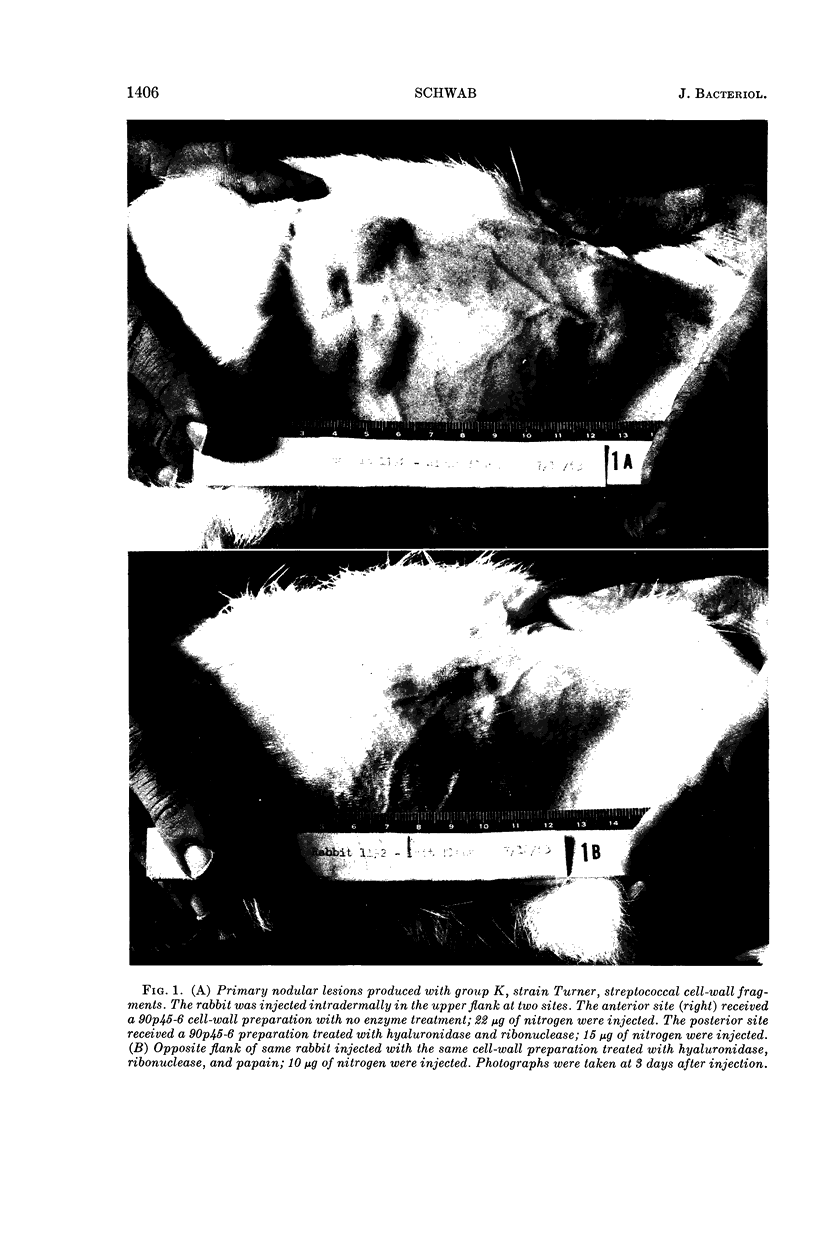
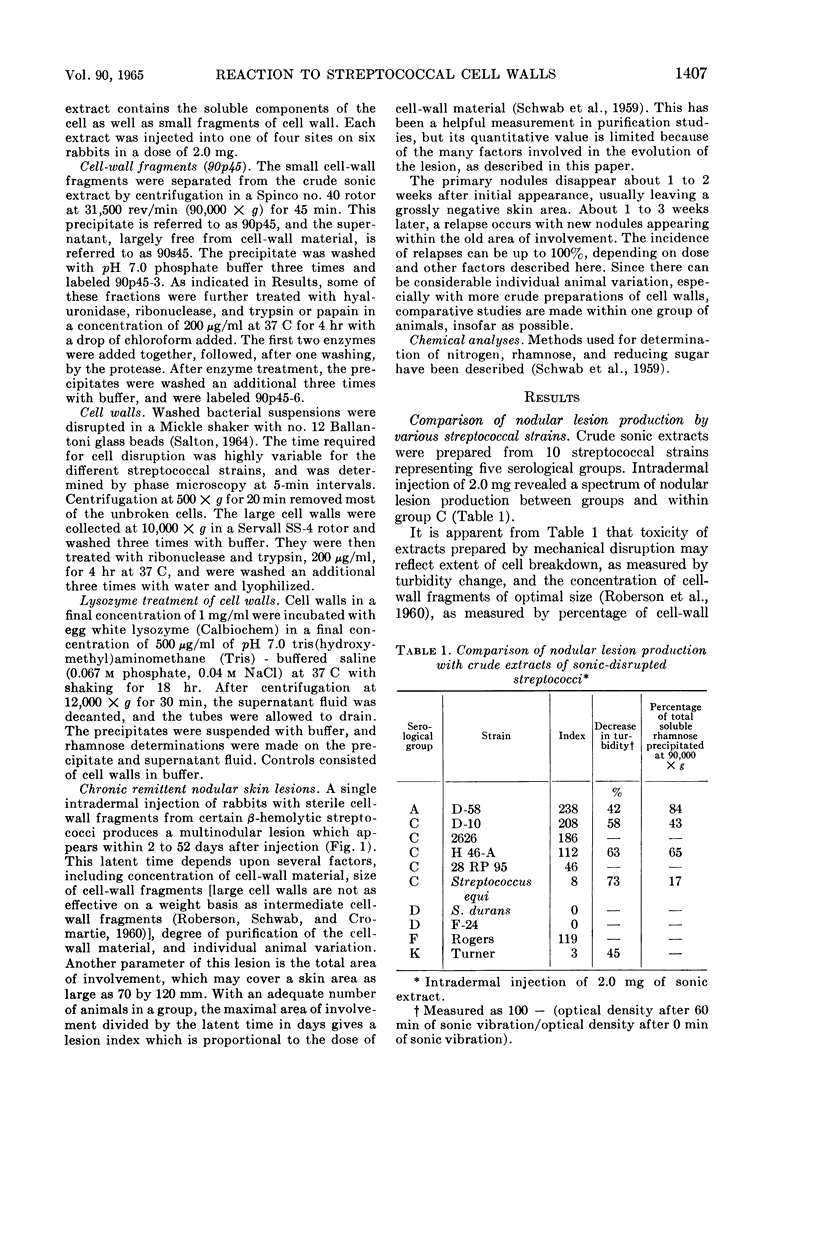

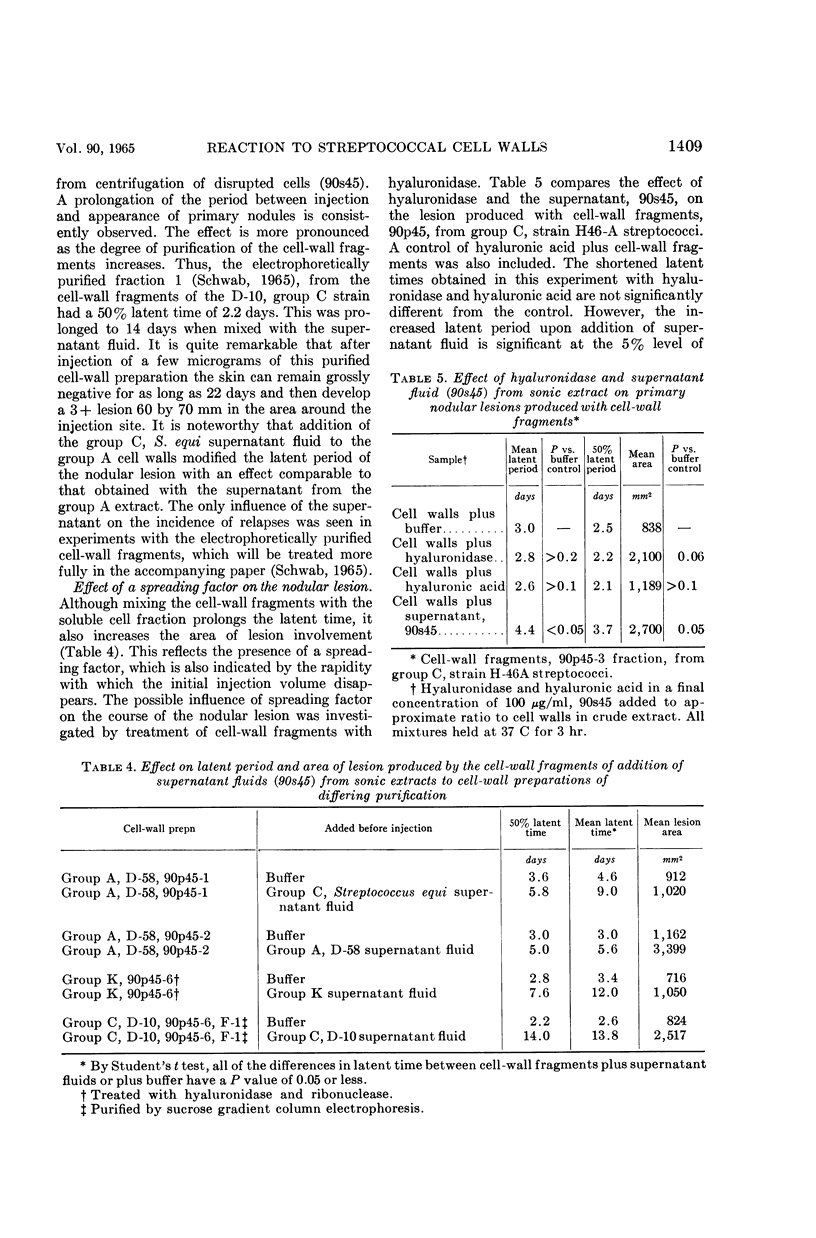
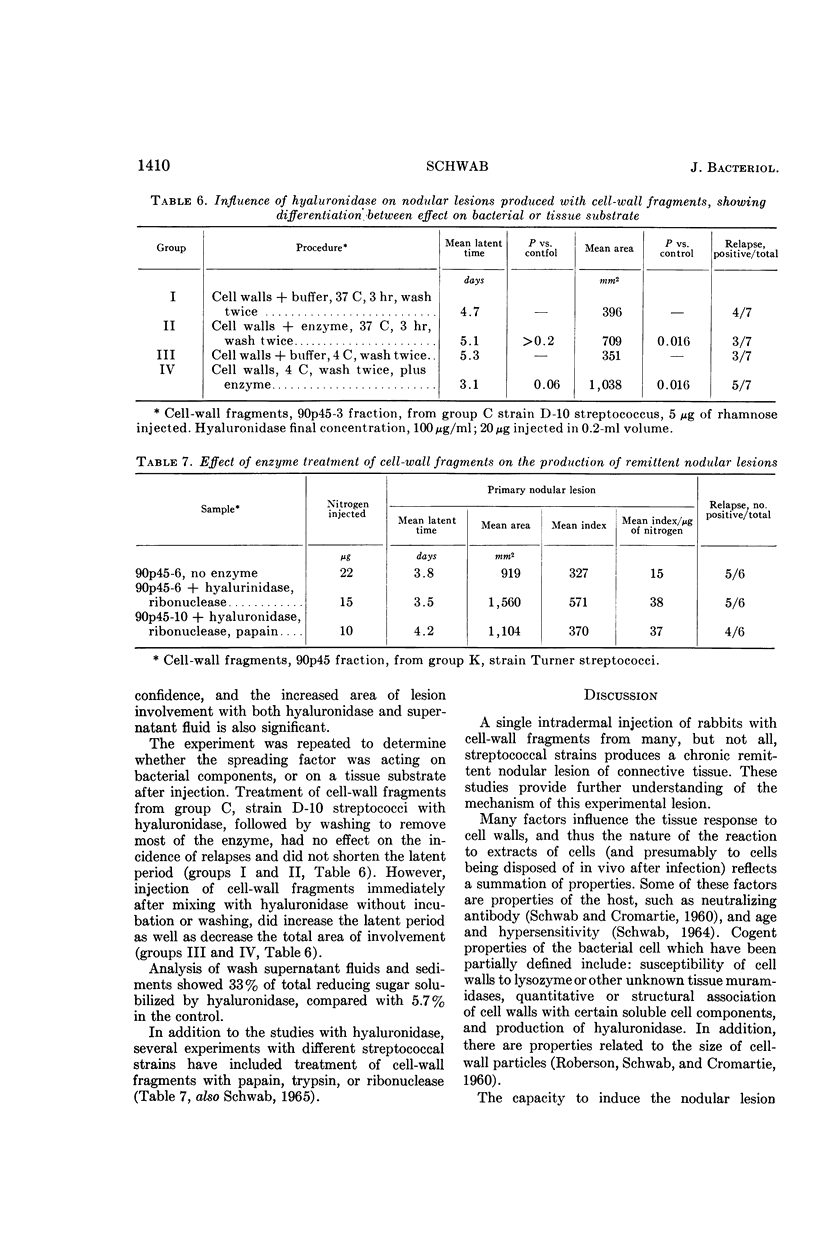
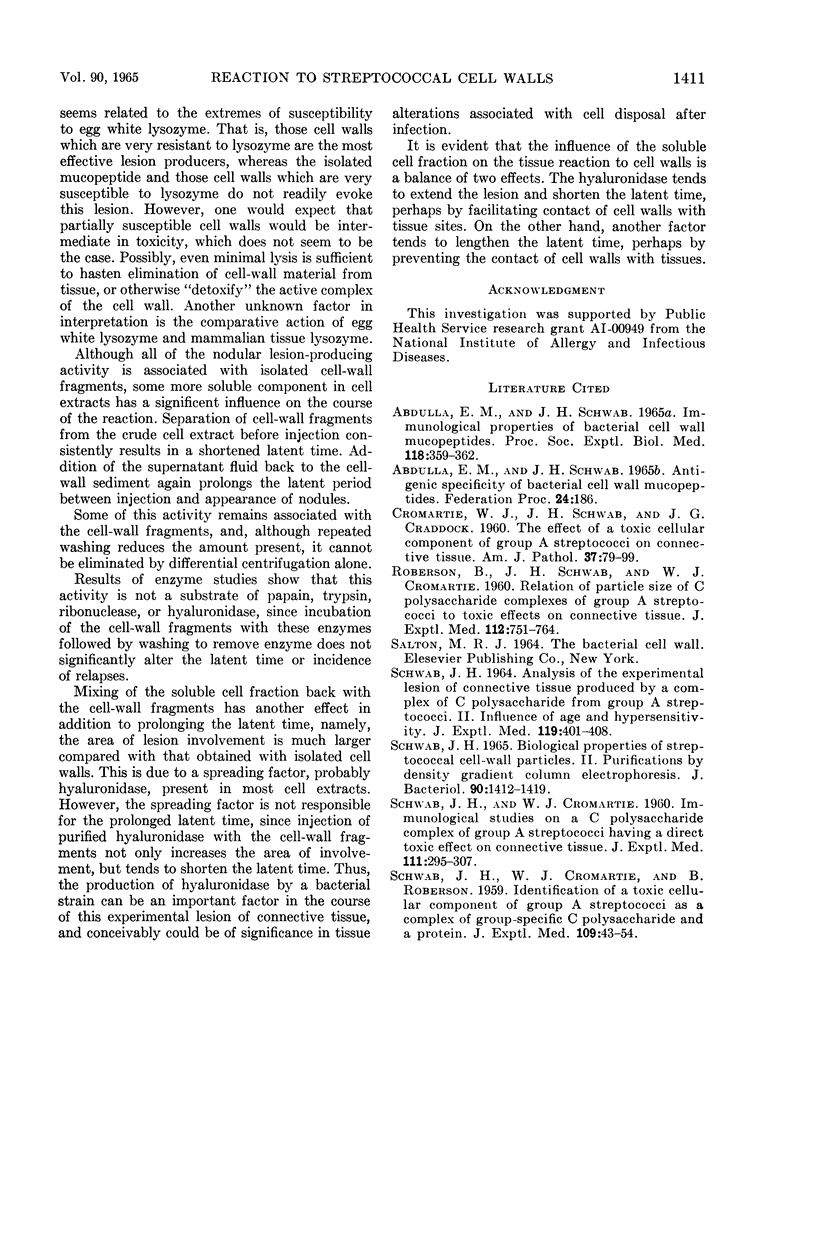
Images in this article
Selected References
These references are in PubMed. This may not be the complete list of references from this article.
- ABDULLA E. M., SCHWAB J. H. IMMUNOLOGICAL PROPERTIES OF BACTERIAL CELL WALL MUCOPEPTIDES. Proc Soc Exp Biol Med. 1965 Feb;118:359–362. doi: 10.3181/00379727-118-29842. [DOI] [PubMed] [Google Scholar]
- CROMARTIE W. J., SCHWAB J. H., CRADDOCK J. G. The effect of a toxic cellular component of group A streptococci on connective tissue. Am J Pathol. 1960 Jul;37:79–99. [PMC free article] [PubMed] [Google Scholar]
- ROBERSON B. S., SCHWAB J. H., CROMARTIE W. J. Relation of particle size of C polysaccharide complexes of group A streptococci to toxic effects on connective tissue. J Exp Med. 1960 Nov 1;112:751–764. doi: 10.1084/jem.112.5.751. [DOI] [PMC free article] [PubMed] [Google Scholar]
- SCHWAB J. H. ANALYSIS OF THE EXPERIMENTAL LESION OF CONNECTIVE TISSUE PRODUCED BY A COMPLEX OF C POLYSACCHARIDE FROM GROUP A STREPTOCOCCI. II. INFLUENCE OF AGE AND HYPERSENSITIVITY. J Exp Med. 1964 Mar 1;119:401–408. doi: 10.1084/jem.119.3.401. [DOI] [PMC free article] [PubMed] [Google Scholar]
- SCHWAB J. H., CROMARTIE W. J. Immunological studies on a C polysaccharide complex of group A streptococci having a direct toxic effect on connective tissue. J Exp Med. 1960 Mar 1;111:295–307. doi: 10.1084/jem.111.3.295. [DOI] [PMC free article] [PubMed] [Google Scholar]
- SCHWAB J. H., CROMARTIE W. J., ROBERSON B. S. Identification of a toxic cellular component of group A streptococci as a complex of group-specific C polysaccharide and a protein. J Exp Med. 1959 Jan 1;109(1):43–54. doi: 10.1084/jem.109.1.43. [DOI] [PMC free article] [PubMed] [Google Scholar]
- Schwab J. H. Biological properties of streptococcal cell-wall particles. II. Purification by density gradient column electrophoresis. J Bacteriol. 1965 Nov;90(5):1412–1419. doi: 10.1128/jb.90.5.1412-1419.1965. [DOI] [PMC free article] [PubMed] [Google Scholar]



